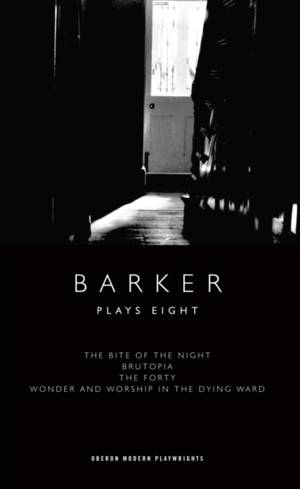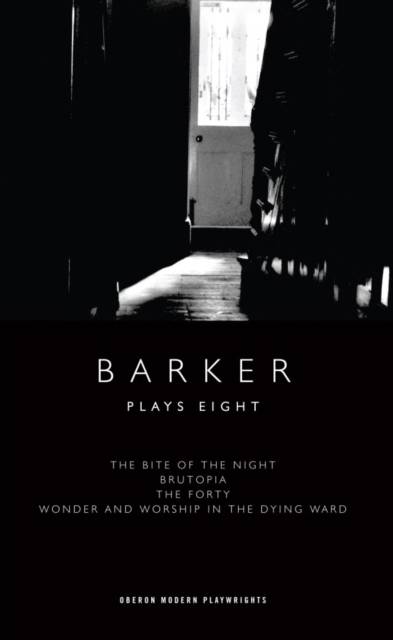
- Retrait gratuit dans votre magasin Club
- 7.000.000 titres dans notre catalogue
- Payer en toute sécurité
- Toujours un magasin près de chez vous
- Retrait gratuit dans votre magasin Club
- 7.000.0000 titres dans notre catalogue
- Payer en toute sécurité
- Toujours un magasin près de chez vous
Barker
Plays Eight: The Bite of the Night; Brutopia; The Forty; Wonder and Worship in the Dying Ward
Howard Barker
45,45 €
+ 90 points
Format
Description
The Trojan legend and the character of Helen form the basis for The Bite of the Night. As with all Barker's mythical and historical works, it is overlaid and undermined by a contemporary narrative, in this instance the search for the origin of the erotic undertaken by the redundant university teacher Dr Savage and his nihilistic student, Hogbin. Through all twelve Troys, Savage and Helen struggle with a passion both intellectual and physical, and the idea of beauty is refined to a terrifying degree.
In Brutopia Barker's controversial portrait of the humanist Thomas More is shaped around his strained relationship with his daughter Cecilia, here discovered to be the author of a counter-text to her parent's infamous Utopia. Cecilia's wit and cruelty mark her out as one of Barker's least compromising and heroic young women.
The Forty is a significant departure from Barker's dramatic practice, his investment in language reduced to a few phrases which punctuate detailed scenes of conflict and solitude. Physical movement, and intense concentration on gesture show the author's flair for visuality in a new and surprising way.
The theme of sacrifice features increasingly in Barker's theatre, and in Wonder and Worship in the Dying Ward it is a mother's refusal to apologize for an act of passion - notwithstanding the dire consequence for her own child - that is at the heart of the argument. Set in a home for terminally-ill patients, many of whom create a hilarious chorus around the protagonists, Wonder and Worship in the Dying Ward shows Barker's imagination in its most startling form.
In Brutopia Barker's controversial portrait of the humanist Thomas More is shaped around his strained relationship with his daughter Cecilia, here discovered to be the author of a counter-text to her parent's infamous Utopia. Cecilia's wit and cruelty mark her out as one of Barker's least compromising and heroic young women.
The Forty is a significant departure from Barker's dramatic practice, his investment in language reduced to a few phrases which punctuate detailed scenes of conflict and solitude. Physical movement, and intense concentration on gesture show the author's flair for visuality in a new and surprising way.
The theme of sacrifice features increasingly in Barker's theatre, and in Wonder and Worship in the Dying Ward it is a mother's refusal to apologize for an act of passion - notwithstanding the dire consequence for her own child - that is at the heart of the argument. Set in a home for terminally-ill patients, many of whom create a hilarious chorus around the protagonists, Wonder and Worship in the Dying Ward shows Barker's imagination in its most startling form.
Spécifications
Parties prenantes
- Auteur(s) :
- Editeur:
Contenu
- Nombre de pages :
- 312
- Langue:
- Anglais
- Collection :
Caractéristiques
- EAN:
- 9781783190874
- Date de parution :
- 10-03-15
- Format:
- Livre broché
- Format numérique:
- Trade paperback (VS)
- Dimensions :
- 130 mm x 206 mm
- Poids :
- 521 g

Les avis
Nous publions uniquement les avis qui respectent les conditions requises. Consultez nos conditions pour les avis.






